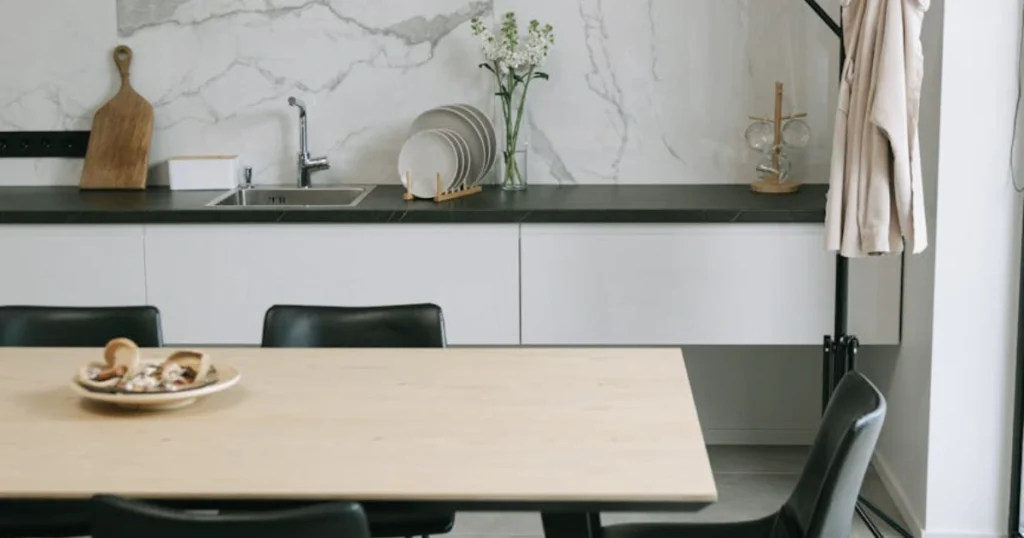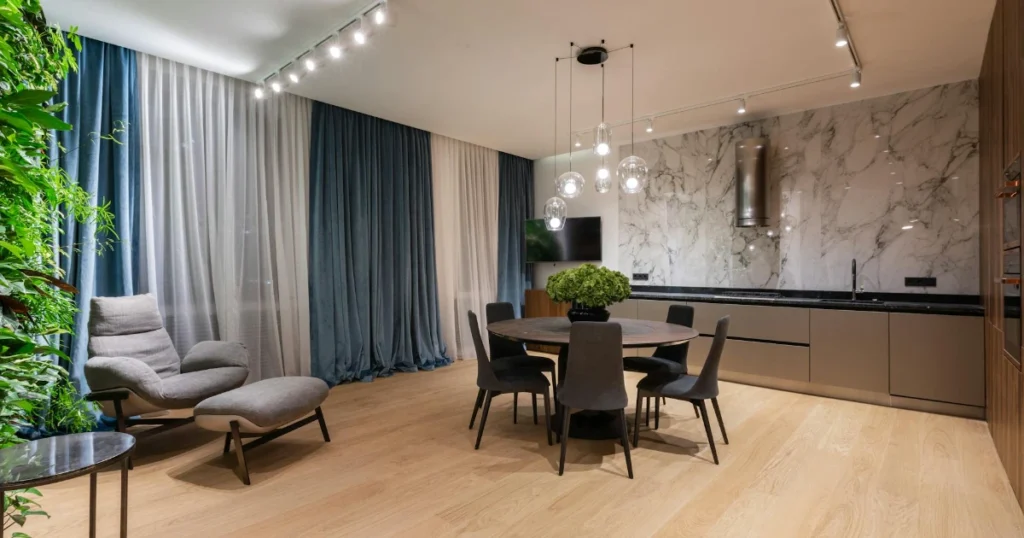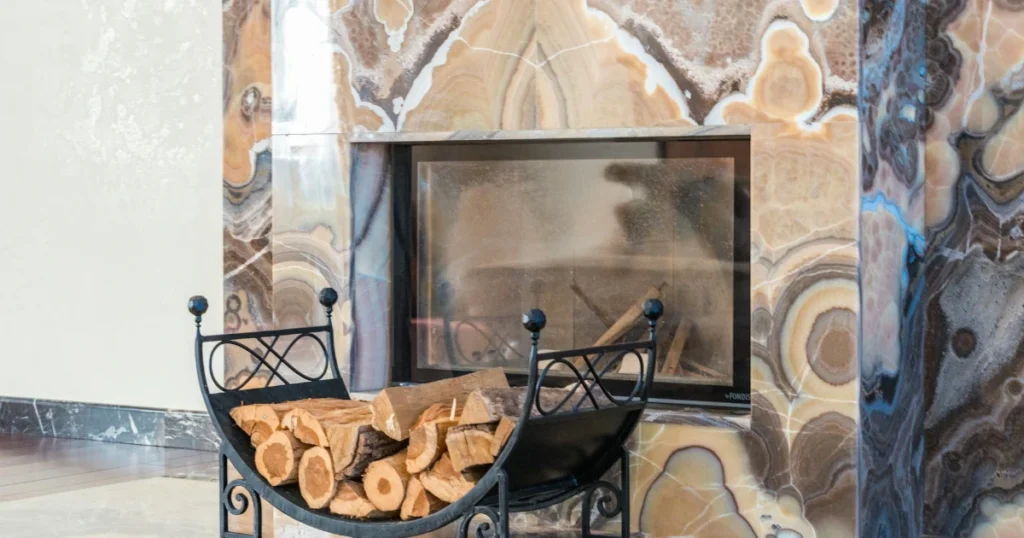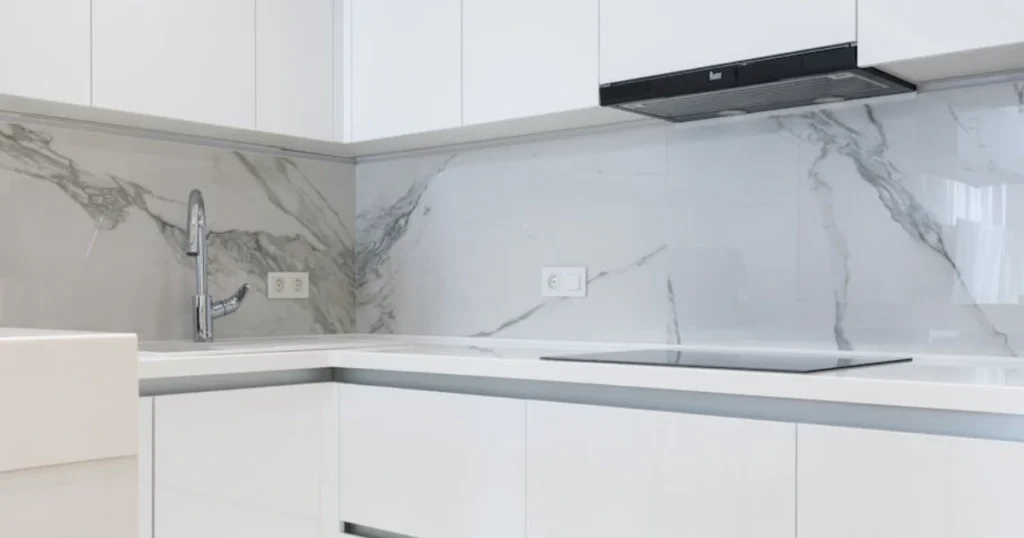Ready to transform a plain wall into an eye-catching marble masterpiece? This comprehensive guide shows you how to use Venetian plaster—combining craftsmanship with artistic freedom—to create unique, luxurious marble walls in your home.
1. The Magic of Marble: Embracing Unpredictability
Creating a marble effect is more than simple plaster application—it’s about embracing the unpredictability of the materials. By accepting spontaneous variations during the process, you unlock the natural beauty that makes each wall unique. This artistic freedom is key to achieving an authentic, abstract marble finish.
2. Essential First Steps: Laying the Foundation
2.1. Base Layer: Pre-Toned Acrylic Paint
Start by applying a consistent base layer of pre-toned gray acrylic paint. This base serves as a crucial foundation by providing a uniform undertone that enhances and intensifies the Venetian plaster layers applied later. Though it may seem like a simple primer, this step determines the overall depth and richness of your marble wall.
2.2. Plaster Batches: Adding Black Dye
Prepare your plaster in smaller batches, adding varying amounts of black dye to each. The goal is not to achieve perfectly identical gray tones but to create subtle shade variations. These differences are essential for the natural veining and depth that characterize genuine marble surfaces.

3. The Art of Application: Mixing on the Spatula
Instead of pre-mixing shades evenly in each batch, combine different plaster tones directly on the spatula as you work. By picking up bits of multiple shades on the blade, you create a spontaneous, blended effect once the plaster hits the wall, mimicking the organic transitions found in real marble.
3.1. Spontaneity: Letting the Materials Speak
The beauty of this technique is that even beginners can enjoy creating. Since precise patterns aren’t required, you allow the materials to dictate the design. This spontaneous process fosters genuine abstraction, delivering unique results every time.
3.2. Key Reminder: Plaster Lightens as it Dries
Remember, Venetian plaster darkens when wet but significantly lightens as it dries and cures. What appears very dark initially will soften into elegant, refined tones with time. This natural brightening effect helps reduce the risk of over-applying dark shades.
4. Building Depth: The Multi-Layer Approach
4.1. The Magic of Multiple Layers
Applying at least three thin plaster layers is essential for developing true marble depth. Each successive layer adds subtle tonal variation and, after polishing, the layers compress under pressure. This fusion produces an optical depth that mimics looking into genuine marble—a dynamic interplay of light and shadow beneath the surface.
4.2. Applying the Second Layer: The ‘ZD or’ Technique
The “ZD or” method involves applying a layer and immediately scraping most of it off, leaving just a whisper of pigment and texture. This creates delicate imprints from underlying layers and adds visual complexity. Randomly add lighter and darker spots instinctively—this controlled chaos is what builds authentic marble character.
4.3. Crucial Tip: Avoiding a Muddy Gray Mass
If your plaster blends into a dull, muddy gray, you’ve likely overmixed it and lost essential tonal variations. The best remedy is to scrape the affected area and start fresh. Preserving the multi-tonal abstract effect layer by layer is critical to the marble illusion.

5. Sanding for Perfection: Smoothing High Spots
Once layers dry, sanding smooths uneven areas and removes imperfections. This step reveals lower layers and builds optical depth by gently leveling the surface.
5.1. Sandpaper Grit: The Key to Success
Use a sanding machine with 500 grit sandpaper. Coarser grits risk deep scratches that cannot be hidden, but 500 grit fine-tunes the surface without gouging. Because plaster is mineral-based rather than fibrous like wood, delicate sanding prevents damage and prepares the wall perfectly for polishing.
5.2. Vital Step: Getting Rid of All Dust
Thoroughly remove dust after sanding. Dust left behind compromises polishing and waxing stages—it can embed in the surface, cause flaws, or prevent proper adhesion. Use a dry cloth followed by a damp cloth to ensure the surface is pristine before continuing.
6. Artistic Touches: Drawing Veins (Optional)
Adding veins enhances the wall’s marble realism. You can trace organic lines mimicking natural veins using either dark acrylic paint or diluted Venetian plaster.
6.1. Techniques: Dark Paint vs. Diluted Plaster
-
- Dark Paint: Creates sharp, dramatic veins that stand out boldly.
- Diluted Venetian Plaster: Offers softer, more subtle, and integrated fissures resembling natural stone.
Experiment with flicking or brushing techniques to achieve non-uniform, organic vein patterns that add depth and authenticity.

7. The Grand Reveal: Polishing for Shine
After layering, sanding, and optional veining, it’s time to polish—this step transforms the wall from matte plaster to a deep, reflective stone-like surface.
7.1. Tools Needed: Angle Grinder and 1500 Grit Circles
Use an angle grinder fitted with 1500 grit polishing discs. Polishing speed is essential—run your grinder at 8,000 to 10,000 RPM (around speed 4 or 5).
7.2. Operational Details: High Speed is Essential
High-speed polishing microscopically melts and fuses the plaster’s top layer, densifying it and producing a rich shine with vivid light reflections. Slower speeds won’t achieve this chemical fusion effect, resulting in a dull finish.
7.3. Troubleshooting: Avoiding Scratches and Stripes
-
- Change polishing discs frequently—e.g., for a 13 square meter wall, expect to use around 10 discs.
- Maintain even pressure and avoid catching edges to prevent disc deformation and dust trapping.
- Keep the surface and discs clean; trapped dust hardens under heat and pressure causing unsightly scratches or stripes.
Being vigilant and methodical here ensures you transition smoothly from dull layers to a vibrant, polished marble-look wall.
8. Final Step: Protecting with Wax
Seal and protect your finish by applying an appropriate wax—this preserves shine and durability.
8.1. Cleaning: Preparing for Wax
Clean the polished surface meticulously. Use a dry cloth first to remove loose debris, then a damp cloth for fine dust. Any residual particles will compromise wax adhesion and appearance.
8.2. Wax Selection: Compatibility is Key
Use wax specifically formulated for acrylic Venetian plaster, preferably from the plaster’s manufacturer. If using another or universal wax, always test compatibility on a hidden sample to avoid discoloration or curing issues that might ruin your work.
8.3. Application: Thin Layer is Crucial
Apply a very thin layer of wax. Thick layers may dry matte and patchy, detracting from the glossy finish. Removing thick spots often requires scraping—something to avoid on polished walls. For final polishing, use a sheepskin or felt polishing pad with an angle grinder, applying careful pressure. Some waxes can be polished immediately; others require 10–20 hours to cure—testing beforehand is essential.

9. Conclusion: The Importance of Testing
Every step—from the first base coat to the final wax polish—requires patience, precision, and testing. Perform small trials to understand how materials respond and how layers build. This vigilance guarantees a stunning, durable marble wall that elevates your home’s aesthetic.
As interior design expert Sarah Jenkins states, “Mastering Venetian plaster is not just technical skill, but an artistic journey. The beauty lies in the process, in the dialogue between artisan and material.”